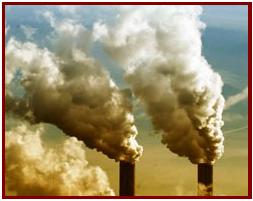
A long overdue regulation of the utility industry in the view of supporters is under attack by Republicans and some but not all power companies.
The U.S. Environmental Protection Agency released today the 17th annual U.S. greenhouse gas inventory. The final report shows overall emissions in 2010 increased by 3.2% from the previous year because the economy expanded slightly. In addition, a factor was an increase in demand for electricity for air conditioning due to warmer summer weather during 2010.
EPA said that total emissions of the six main greenhouse gases in 2010 were equivalent to 6,822 million metric tons of carbon dioxide. These gases include carbon dioxide, methane, nitrous oxide, hydrofluorocarbons, perfluorocarbons and sulfur hexafluoride. EPA estimates that overall emissions have grown by more than 10% from 1990 to 2010.
After taking office in 2009, President Obama – prompted by a 2007 Supreme Court decision affirming that the Clean Air Act covered greenhouse gases – directed DOT and EPA to speed development of auto fuel efficiency and greenhouse gas emissions standards on a national basis. The previous Bush Administration had declined to do so, leading to lawsuits from environmental groups, potentially causing chaos and economic harm to automakers, as well as hurting the U.S. economy.
EPA in 2009 determined that “greenhouse gas pollution threatens Americans’ health and welfare by leading to long lasting changes in our climate that can have a range of negative effects on human health and the environment.” Tougher national fuel economy standards ensued, and they could go as high as 54 mpg.
One giant caveat here: The EPA window sticker rating is not the same as the EPA CAFE rating used by automakers. As a rule, window sticker ratings are 25% lower than the numbers used for CAFE compliance. Moreover, the sticker ratings have been adjusted downward in recent years after drivers complained they were too optimistic. (See EPA Says Fuel Economy at Record High, CO2 at Record Low)
Currently, there is no uniform national limit on the amount of carbon pollution new power plants can emit, which comes from burning fossil fuels but EPA is in the process of issuing them. (See EPA Announces Carbon Pollution Limits for New Power Plants)
The Inventory of U.S. Greenhouse Gas Emissions and Sinks: 1990-2010 is the latest annual report that the United States has submitted to the Secretariat of the United Nations Framework Convention on Climate Change, which attempts to provide an overall framework for intergovernmental efforts to tackle the challenge posed by climate change.
The inventory tracks annual greenhouse gas emissions at the national level and presents historical emissions from 1990 to 2010. The inventory also calculates carbon dioxide emissions that are removed from the atmosphere by “sinks,” e.g., through the uptake of carbon by forests, vegetation and soils.
More on the greenhouse gas report http://www.epa.gov/climatechange/emissions/usinventoryreport.html,

